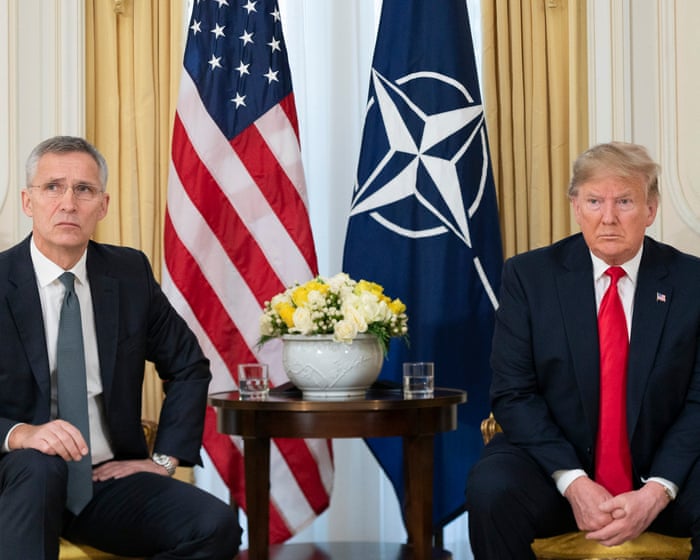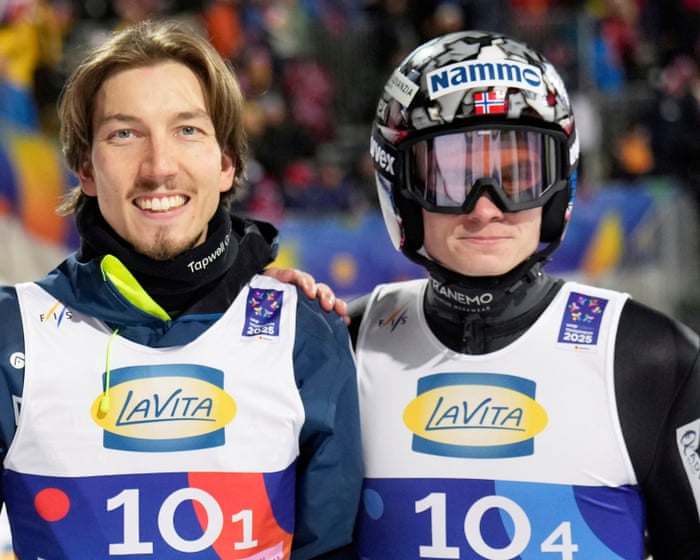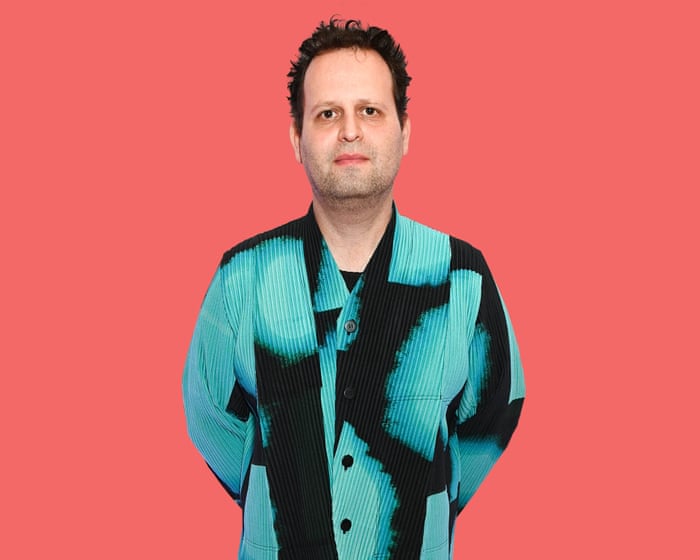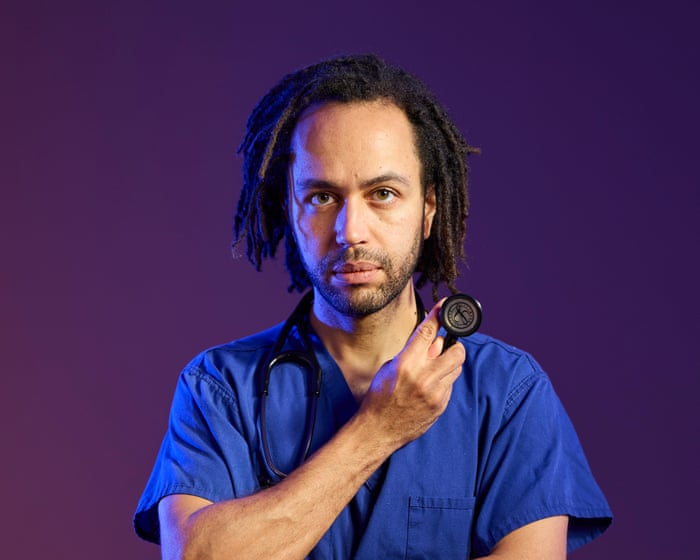The United States holds unparalleled significance for NATO, thanks to its political, economic, and military influence. That’s why the forces shaping American politics—and who occupies the White House—are so crucial. The 2016 presidential election mattered not just for the U.S., but for the entire alliance.
For the first half of 2016, Hillary Clinton led in every poll. By fall, experts were predicting her victory, and I too had a gut feeling she would win. On election night, my wife Ingrid and I hosted a gathering with friends and colleagues at our Brussels residence. We set up a large TV in the living room and served hamburgers. Knowing it would be a long night, I went to bed before midnight.
I woke at five and checked my phone. Donald Trump had won Pennsylvania and Ohio. It wasn’t yet certain, but CNN was reporting he would win. When I joined the election breakfast at six, everyone else seemed just as surprised as I was.
I was worried about what would come next, given Trump’s criticism of NATO during his campaign. In a late March TV interview, he called NATO “obsolete,” a stance that challenged 70 years of American foreign policy. Though several Republican leaders pushed back, it didn’t seem to faze him. Around the same time, when asked who he consulted for foreign policy advice, he replied, “I’m speaking with myself, number one, because I have a very good brain.”
The American people had chosen Trump, and we had to respect that. I wanted NATO to build a good working relationship with him quickly, to encourage a more positive view of the alliance. Internally, discipline was essential. I made it clear that groaning or eye-rolling at meetings over Trump’s tweets or public appearances was unacceptable. There would be no mocking laughter or jokes about his golfing or mannerisms. Zero tolerance was key, as even a few individuals making fun could spread through the organization and leak out. If word reached Washington that NATO staff were laughing at Trump, it would be disastrous.
On November 18, I spoke with Trump for the first time. “I’m a big, big, big fan of NATO! Great to speak with you, looking forward to working with you,” he said. I was a bit taken aback that we largely agreed on key issues. Trump believed European members should spend more on defense. “I completely agree with you,” I said, noting that fairer burden-sharing and increased defense spending had been my main focus since taking office. He also stressed that NATO needed to be better prepared to fight terrorism. “I completely agree with you,” I repeated.
He asked for my thoughts on candidates for key positions, which surprised me, but I didn’t object. Rex Tillerson for Secretary of State? I knew him slightly from the oil industry and energy conferences in the ’90s. “A good choice,” I said.
Jim Mattis for Secretary of Defense? Truthfully, my knowledge of him came mostly from the HBO series Generation Kill about the Iraq War, which I’d watched with my son. Mattis was portrayed as a legendary, respected, and feared general with the call sign Chaos. After a brief, awkward pause, Torgeir Larsen, my office director who was listening in, handed me a note that read, “Jim Mattis is great. He knows NATO.” So I told Trump, “Jim Mattis is great. He knows NATO.”
After that first conversation, I felt more optimistic. Like many, I didn’t agree with all of Trump’sI disagreed with Trump’s views on climate change, abortion rights, and trade policy, but his comments about NATO in our conversation gave me something to build on.
After the election, Barack Obama invited the president-elect to the White House for a cordial meeting. Trump expressed gratitude for Obama’s efforts, and Obama fulfilled the traditional role of an outgoing president. This reassured me, and I thought the post-election period would bring calm. I believed Trump would grow into his new responsibilities and, with capable advisors, become more like previous presidents. That was my second misjudgment of Donald Trump.
In mid-April 2017, I arrived at the White House for my first meeting with Trump. I had prepared some polite remarks about his election win and the first lady, Melania. When the door to his office opened, he wasn’t standing to greet us; instead, he was relaxed in a chair and said with a smile, “Come on in, guys.”
I recalled the much-discussed handshakes Trump had with other world leaders: a firm, 15-second grip that made Japan’s Prime Minister Shinzo Abe wince, a similar treatment for Canada’s Justin Trudeau, and French President Emmanuel Macron’s white-knuckled response. Commentators speculated that Trump used handshakes to assert dominance or bolster his masculine image. Not long before my visit, he had declined to shake German Chancellor Angela Merkel’s hand in front of cameras, sparking more analysis.
When Trump stood and extended his hand, I was a bit nervous, but his handshake turned out to be surprisingly normal—neither too strong nor too weak.
Once we started talking, it became clear the conversation would be very informal, jumping from one subject to another. Discussing Russia, Trump suddenly asked, “But why can’t you guys in NATO join us in Korea? They’re developing nuclear weapons, and that’s unacceptable.”
A few months earlier, North Korea’s leader Kim Jong-un had announced final preparations for testing an intercontinental nuclear missile, followed by medium-range missile launches into the Sea of Japan. So, Trump’s mention of North Korea wasn’t entirely unexpected, but I was puzzled by his meaning. Did he want NATO to get involved in North Korea?
I replied, “Mr. President, all allies are concerned about nuclear weapons, but I don’t think there’s support for bombing North Korea.”
He countered, “But you’re in Afghanistan. Why can’t you be in North Korea?” before quickly changing the subject. We discussed terrorism and ISIS, with Trump stating, “We have to kill them, we have to bomb them, they’re really evil people.”
Returning to Russia, I reiterated the points I’d emphasized since taking office at NATO: “We must be strong and predictable but open to dialogue with Russia. Russia is here to stay—it’s a neighbor, not a terrorist group like ISIS that needs to be wiped out.”
As I often did, I drew on Norway’s experiences, saying, “You know, Mr. President, as former prime minister of Norway, I know it’s possible to talk with the Russians.”
Trump gave me a puzzled look and asked, “Are you Norwegian?”
I understood why he asked—over the years, I’ve often beenAs a leader of organizations myself, I often meet many others in similar roles, and it’s not always easy to recall where each one is from. I smiled and said, “Yes, I’m Norwegian.”
“Do you know Celina Midelfart?”
“Yes, I’ve met her several times. She’s quite well-known in Norway,” I replied.
“Nice girl. What did the Norwegian papers write about us—was it good or bad?”
I remembered seeing photos in the newspapers of Trump with the Norwegian cosmetics heiress and investor at some sporting event, but beyond that, I couldn’t recall. I had no idea what the papers had said.
“Oh yes, the coverage was positive. She’s married to a wealthy Norwegian now,” I said.
“He’s not rich.”
So the President of the United States clearly knew who investor Tor Olav Trøim was. But would having a few billion kroner make you rich? Perhaps not in Donald Trump’s eyes.
On the script Trump was reading from, a few words had been added in thick black marker: ‘MUST PAY’ and ‘NOT FAIR’. After about 20 minutes, our private conversation ended. Trump’s advisers and several members of my delegation joined us. I noticed my colleagues watching anxiously as Trump and I shook hands again for the photographers. But everyone missed out on what could have been an amusing anecdote.
For Trump, the most critical issue was NATO members’ defense spending. I hoped to present a more positive view of the alliance and had brought a graph showing that spending was increasing. Trump was fixated on the fact that only five member states had met the goal of spending 2% of GDP on defense. I pointed out that several countries were close, and six or seven were expected to reach the target soon. Then there was Iceland: with no armed forces, it would never spend 2% of GDP on defense. So, effectively, it was five out of 27 countries that had achieved the goal, not five out of 28. I worried I might sound a bit nerdy with all these numbers.
But this caught Trump’s attention, though not as I had intended. “Then what do we need Iceland for?” he asked.
Before I could respond, Jim Mattis stepped in to help, explaining the importance of NATO’s bases in Iceland for the alliance’s submarines, ships, and planes: “Mr. President, they’re essential for tracking Russian subs.” Trump paused for a moment and said, “Well, then we’ll let Iceland stay a member.”
In NATO, we don’t roll out a red carpet—we use a blue one. On Thursday, May 25, 2017, we laid out an extra-long, extra-wide bright blue carpet stretching from the main entrance to the road leading to NATO HQ. The blue reflects the color of our flag, symbolizing the Atlantic Ocean that unites the alliance. Everything was set for a grand ceremony with NATO heads of state and government in attendance.
That day, President Trump was making his first appearance at a NATO summit, and we were also inaugurating the alliance’s new headquarters. While I looked forward to leading the event, I also felt some apprehension. After our meeting at the White House weeks earlier, doubts about Trump’s true stance on NATO had resurfaced.
Article 5 of the North Atlantic Treaty is NATO’s collective defense clause, the core of the alliance: one for all and all for one. Despite persistent questioning from the press, Trump had refused to give a clear “yes” on whether the U.S. still stood by this commitment. “Why should we protect countries that aren’t willing to pay for their own security?” he had said, making many allies uneasy. To them, it seemed Trump was reducing NATO to little more than a protection racket.
After exchanging a few pleasantries, the plan was to take Trump to where the text of Article 5 is carved into the wall, so we could be photographed together there.A photo was to be taken in front of it. I had planned to share some information with Trump about the new building and NATO, but his incessant questioning kept interrupting me. “Do you really need such a big headquarters?” he inquired. “What do you need all these people for?”
I explained that although the organization itself isn’t huge, delegations from member states also use the building—it facilitates meetings with security measures in place, and everyone shares the same cafeteria. I informed Trump that the headquarters was designed by the architects Skidmore, Owings & Merrill, who also designed the Trump International Hotel & Tower in Chicago.
“I know them. They’re very expensive,” Trump remarked. “I don’t get why you picked such costly architects. Very expensive!”
In front of the main entrance, a small avenue with newly planted trees had been created, flanked by lawns. On one side stood a twisted steel girder from the Twin Towers in New York; on the other, sections of the Berlin Wall. These served as reminders of pivotal moments in NATO’s history. When introducing Angela Merkel as a speaker, I noted that she had lived in Berlin not only when the wall went up in 1961 but also when it fell in 1989, forever changing Europe.
“Every day, those who enter this building will pass this memorial. They will understand that freedom will never be defeated. And NATO will always defend the values our alliance is built upon,” I said. Merkel expressed her thanks for NATO’s role during the Cold War and stated that the wall’s collapse symbolized democracy’s victory, even after long struggles.
Then it was Trump’s turn to speak, standing before a fragment of the Twin Towers’ wreckage. The memorial is officially named the 9/11 and Article 5 Memorial to highlight NATO’s solidarity. I introduced Trump by emphasizing this unity. “NATO’s greatest strength is the enduring bond between North America and Europe. We witnessed that strength after the 9/11 attacks on the United States,” I said.
“And President Trump,” I continued, “those attacks hit close to home in your own city, New York. For the first time, NATO invoked our collective defense clause, Article 5. One for all, and all for one.”
I had set the stage for him. All Trump needed to do was underscore NATO’s support when the U.S. was attacked and reassure everyone that the same assistance would be available to them if needed.
Trump began by speaking at length about the threat of terrorism. This wasn’t surprising—just three days earlier, on May 22, a suicide bomber had struck Manchester in the UK. Trump condemned the attack, which killed 22 people and injured hundreds. He then mentioned the threat posed by Russia.
But then came the financial criticisms. “Twenty-three of the 28 NATO nations are still not paying what they should for their defense,” Trump declared. “This is not fair to the people and taxpayers of the United States.”
The day before, we had been given a copy of the president’s planned speech in private. It was excellent, covering all key points, including Article 5 commitments. However, at some point, Trump must have decided to deviate from the prepared text.
As I stood beside him, I could glance down at his script. A few words had been added in bold black marker: “MUST PAY,” “NOT FAIR,” and “2% is the absolute minimum!” He had clearly crossed out some parts and inserted others to intensify the message. There he was, dedicating the 9/11 andI don’t feel I’m being treated fairly here. You speak frankly, Donald, so I will do the same. Germany is the second largest contributor of forces to NATO. 9/11 and Afghanistan are the only times Article 5 has ever been invoked. This has helped protect the United States, despite strong opposition in my country, where many asked what Afghanistan has to do with us. Germany can do more, and we can probably do things better. But now we must stick to the commitments we have made.
Everyone agreed that member states would increase their defense budgets to 2% of GDP. The problem was that Trump insisted it happen this year, while the other nations aimed to reach the target by 2024, as stated in the summit declaration from the previous day.
Trump spoke again, listing each member state’s defense spending as a percentage of GDP as if announcing Eurovision song contest results. “Belgium: 0.9. That’s less than 1%. Croatia – oh, I’m so disappointed in you, I can’t believe it: 1.26%. You must feel rotten,” he said, scanning the room for the relevant leader. “Estonia: 2%. Thank you! France: 1.79. Not bad, Emmanuel. Not bad for you. You haven’t been president long enough; it’ll probably go down. Germany: 1.2. Come on, Angela! Come on!”
He continued until finally: “United Kingdom: 2.1. Thank you. That’s very good. United States: 4.2% of the largest GDP of all. So you might as well call us idiots. But I haven’t been at this party very long. How stupid is this? That’s all.”
He leaned over toward British Prime Minister Theresa May and said something, then turned to Turkish President Recep Tayyip Erdoğan, who was sitting on his other side, and gave him a high-five.
Several other leaders spoke. Some sympathized with Trump’s demand for immediate spending increases, while others were as reserved as Merkel and Macron.
Then I gave the floor to Mark Rutte. This was no accident; we had met for lunch in The Hague a week before the summit and discussed how to get Trump to support NATO, including by highlighting the $33 billion increase in defense spending.
“Mr. President, you have urged us to spend more, and I agree with you,” Rutte said. “And that is exactly what we are doing. Last year, we spent $33 billion more on defense because of your leadership. So this is good news for you.”
Trump liked this. Thirty-three billion. He nodded.
After a while, he took out the thick black marker he always used, wrote something on a sheet of paper, and handed it to me. His handwriting was neat and rather attractive. The note read: “Secretary General, if you can say the NATO allies have significantly increased their defense spending thanks to me, I think we can agree.”
I finally saw an opportunity to wrap up the meeting. I took the floor myself.
“At the press conference after the meeting, I will state that the NATO allies have significantly increased their defense spending thanks to President Trump’s leadership and clear messaging,” I said, practically reading from his note. Then I added, “And at the same time, that all member nations remain committed to NATO and to Article 5 of the treaty.”
I hoped against hope this would be enough to end the meeting in a way acceptable to everyone. The problem was that 12 leaders were still on the list to speak. If I allowed the debate to resume, it seemed extremely likely that at least one of them would say something that irritated Trump, breaking the fragile consensus. So I looked pleadingly around the table at Merkel, Macron, May, Trudeau, Erdoğan, and all the others and suggested something highly unusual—that we move to stop the discussion.The discussion was now underway, with everyone seemingly in favor of my proposed conclusion. “Can we agree?” I asked.
Nods came from around the table, and for a moment, I felt that both the day and NATO were secure. But then, Lars Løkke Rasmussen, the prime minister of Denmark, raised his hand and indicated he wasn’t going to withdraw from the list of speakers.
Løkke Rasmussen, a cheerful and down-to-earth Dane whom I greatly admired, began cautiously. He spoke about the importance of unity in challenging times and agreed on the need for fair financial burden-sharing. Then he fixed his eyes on Trump and paused. “But sharing the burden isn’t just about money, Mr. President. It’s about blood and sacrifice. Denmark, a country of only five million people, has lost 45 soldiers in Afghanistan in response to an attack on the United States.”
He had clearly reached his limit. His voice trembled as he said, “By population, Denmark has lost more soldiers in Afghanistan than the United States.” He refused to look the families of those soldiers in the eye and tell them their loved ones’ lives mattered less because Denmark hadn’t met the 2% spending target.
This moment reminded me of a scene from “Love Actually,” where Hugh Grant, as the British prime minister, stands up to the American president. But this was no movie—it was real life. I realized it was right that Løkke Rasmussen had been allowed to speak. Still, I held my breath when he finished.
Trump remained silent. Everyone knew they were part of a historic meeting, and several leaders now wanted to join the conversation, but I wasn’t going to let them speak. The meeting was over.
Trump held a press conference right after. “The United States’ commitment to NATO is very strong, remains very strong, but primarily because everyone—the spirit they have, the amount of money they’re willing to spend, the additional money they will be putting up has been really, really amazing to see. To see the level of spirit in that room is incredible,” he said.
He also mentioned the $33 billion. “The allies will spend at least $33 billion more, in addition to what we previously agreed. We are more united than ever. No problem.”
To this day, I’m still surprised by how Trump accepted the summit’s outcome. Had he followed through on his threat to leave in protest, we would have been left to pick up the pieces of a shattered NATO. I think he realized he was hitting a wall with his demands for immediate budget increases, but at the same time, he left Brussels convinced he would see more money by the new year.
When I met him at the UN headquarters in New York a few weeks later, he smiled, satisfied. “Is the money still coming in, Secretary General?” he asked.
“Mr. President, the money is flowing in,” I replied. This is an edited excerpt from “On My Watch: Leading NATO in a Time of War” by Jens Stoltenberg, published by William Collins on October 23 for £25. To support the Guardian, order your copy at guardianbookshop.com.
Frequently Asked Questions
Of course Here is a list of FAQs about the reported meeting where Donald Trump allegedly threatened to leave NATO
General Beginner Questions
1 What is this story about
This story is about a reported meeting in 2018 where thenUS President Donald Trump allegedly threatened to withdraw the United States from NATO the North Atlantic Treaty Organization if other member countries did not increase their defense spending
2 What is NATO
NATO is a military alliance formed in 1949 between North American and European countries Its core principle is collective defense meaning an attack on one member is considered an attack on all
3 What exactly did Trump say
According to reports Trump told other leaders at a summit Im leaving Theres no point in staying any longer to express his frustration that some countries were not meeting their agreedupon defense spending targets
4 Why was Trump upset with NATO
He was upset that many NATO countries were not spending 2 of their Gross Domestic Product on their own defense a goal all members had agreed to work towards He argued the US was bearing too much of the financial burden
5 Did the US actually leave NATO
No the United States did not leave NATO The threat was made during a closeddoor meeting and did not result in an official withdrawal
Deeper Advanced Questions
6 Why was this threat such a big deal
It was a big deal because the US is the most powerful member of NATO The entire alliances credibility relies on the mutual defense promise especially the commitment of the United States A US withdrawal would have fundamentally weakened the alliance and shaken global security
7 What is Article 5 and why is it important
Article 5 is the collective defense clause of the NATO treaty It has only been invoked onceby the United States after the 911 attacks The threat to leave undermined the core guarantee that all members including the US would come to each others aid
8 Did Trumps pressure on spending work
In a way yes His public and private pressure did spur many European NATO members to significantly increase their defense budgets Countries that were lagging accelerated their plans to meet the 2 GDP target




